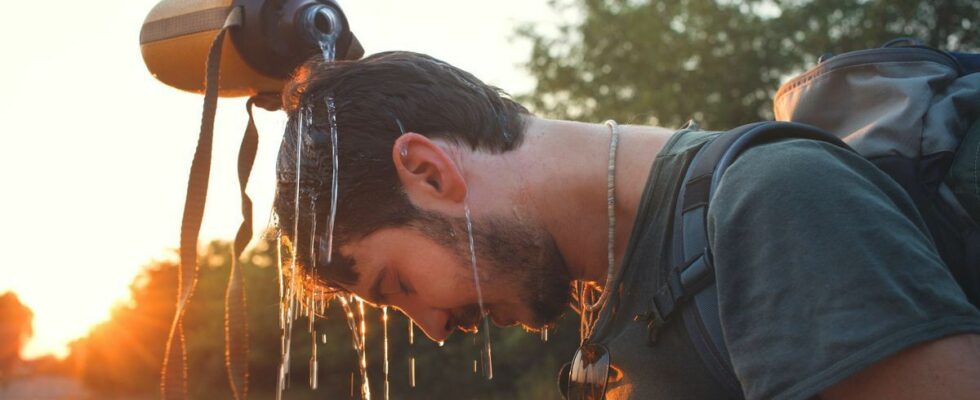Published on
Updated
Reading 3 min.
in collaboration with
Dr Gérald Kierzek (Medical Director of Doctissimo)
Last week, a 49-year-old Belgian man died in Corsica after suffering a full-blown heatstroke during a routine family walk. Our emergency physician, Dr. Gérald Kierzek, takes stock of this underestimated danger in summer.
According to information from the Flemish daily NHL, Steven De Baerdemaeker, a 49-year-old Belgian, died on Tuesday 16 July after a three-day holiday in Corsica. The man succumbed to heatstroke during a summer walk.
A walk in 31 degrees that goes wrong
The tragedy seemed out of place. According to her partner Gina, who testified in the daily newspaper, the accident happened during a two-hour family walk in nature, chosen for its peaceful nature. But in temperatures of 31 degrees, the young woman gave up after a quarter of an hour when Steven, who tolerates the heat well according to her, wanted to continue his walk. He did not return after the planned two-hour walk. After several calls, Gina finally came across hikers who had found Steven unconscious. Taken urgently to Bastia hospital, he succumbed to heatstroke within a few hours. According to the doctor, his body temperature had reached 41°.
What is heat stroke?
Unfortunately, most people don’t realize that a “simple heatstroke” can have fatal consequences. It occurs when the body can no longer cool itself down. As the daily explains, the body has an “internal thermostat” located in our brain: the hypothalamus, which keeps our body temperature between 36 and 38 degrees. As soon as our body temperature exceeds this threshold, the hypothalamus sends signals to the heart, which in turn sends more blood into the blood vessels of our skin. At ambient temperatures of up to 35 degrees, the release of heat through the skin is no problem.Beyond 35 degrees it becomes much more difficult. sweat then becomes much more important, especially if the humidity of the environment also increases. Certain problems will then arise, because our body cannot evacuate heat as easily.”
“Heat stroke can happen to anyone (athletes, healthy people, etc.). It is a medical emergency that requires rapid treatment,” adds Dr. Gérald Kierzek, emergency physician and medical director of Doctissimo.
Recognizing heat stroke
To avoid serious consequences, the first thing to do is to know how to recognize heatstroke. According to our emergency doctor, it is imperative to watch for signs that indicate danger:
- A high fever;
- A redness of the face;
- Headaches ;
- A strong thirst;
- Nausea/vomiting;
- A confusion ;
- An increase in heart rate;
- Rapid breathing;
- Absence of sweating;
There are also people who are more at risk than others: young children, the elderly, and overweight people.
It is also best to avoid putting yourself in a situation where heat stroke can occur. For this, our expert also has many tips:
- Limit exposure to the sun, especially between 11 a.m. and 4 p.m. Stay in the shade;
- Hydrate regularly, without waiting until you are thirsty. Drink at least 2L per day, more in very hot weather;
- Wear light, loose and light clothing. Protect your head with a wide-brimmed hat;
- Avoid intense physical effort in high heat;
- Freshen up regularly (cool shower, spray, damp cloth);
- Eat enough, favor foods rich in water and mineral salts;
- Ventilate and ventilate enclosed spaces. Avoid staying in a car in the sun;
- Be vigilant with fragile people (children, elderly people) and make them drink often;
- Avoid alcohol and stimulant/diuretic drinks;
- Acclimatize gradually if traveling to a hot country.
“If there are signs of heat stroke, move the person to the shade/cool place, hydrate them and call for help quickly” concludes our expert.
